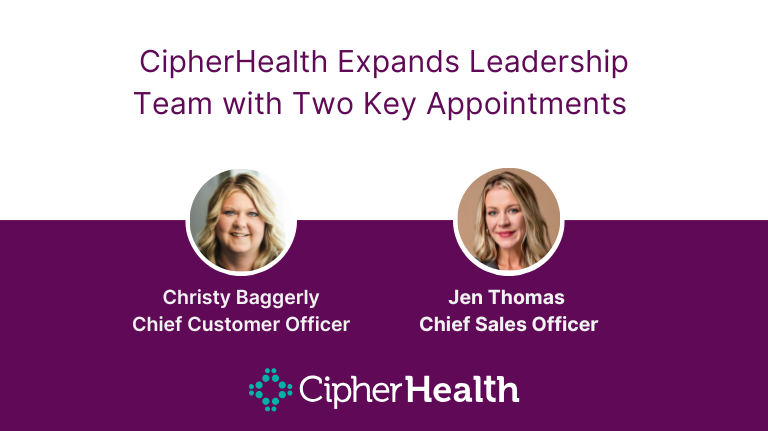A new Health Affairs study found that after year one of the Medicare Access and CHIP Reauthorization Act of 2015 or MACRA, 60 percent of physicians reported being not at all or only slightly familiar with the policy, and only 8 percent reported being very familiar. In light of these statistics, as well as recent CMS-proposed rules to change MACRA, it’s important that physicians continue to educate themselves about the regulatory environment, which will increasingly impact how they get reimbursed and deliver care to patients.
The 30,000-foot View of MACRA
When MACRA was introduced in 2015, the physician community praised it as a step in the right direction. The law replaced the flawed Sustainable Growth Rate or SGR, which was a set of economic formulas that determined Medicare reimbursements from year to year, with the Quality Payment Program or QPP.
The purpose of QPP is to promote flexibility and innovation in the delivery of care for Medicare recipients, which in turn will improve quality and outcomes for patients and reward providers for doing so. It offers two paths to achieving this – the Merit-based Incentive Payment System or MIPS, and Alternative Payment Models or APMs.
MIPS
The vast majority of providers will only qualify for the MIPS track. Under the program, physicians are scored in four areas: quality, which includes patient experience and outcome measures; promoting interoperability with regard electronic health records; improvement activities such as enhancing patient engagement and increasing access; and cost of care delivery. The degree to which physicians are incentivized or penalized in terms of reimbursement will be based on these performance metrics.
APMs
This program is aimed toward larger and more technologically advanced practices, including those that engage in the next generation accountable care organization model or tracks 2 or 3 of the Medicare Shared Savings Program or MSSP. CMS estimates that no more than 4 percent of physicians qualify for this track.
The major overhaul of Medicare payments will directly impact many stakeholders along the healthcare continuum, including providers, health systems, and payers. Eligible physicians in particular are at a crossroads – on one hand there is strong incentive for them to participate in APMs that require risk-sharing for a broad range of health services that are designed to drive quality improvements, and on the other they will be on the hook to measure and report on the various metrics required of MIPS. Regardless of the path they choose, providers will likely have to consider changes in their practices to improve value.
While physicians with low Medicare patient populations may be exempt from MACRA, it would behoove them to also take notice. It’s anticipated that the policy will set the stage for payers across the spectrum, including other government programs and commercial health plans.
MACRA Means Well, But Is It the Right Solution?
While physicians generally support the intent behind MACRA, not all agree on the mechanism. Specifically, industry leaders have expressed a number of concerns about MIPS, which some feel can have unintended consequences and even hinder the transition to value-based care.
One’s Gain Is Another’s Loss
At the heart of the growing concerns surrounding MIPS is the payment adjustments are a zero-sum game. This means that one practice might be doing everything right, but if others are doing it better, it’s to their detriment and they may be missing out on financial incentives and even worse, could be penalized.
One Size Does Not Fit All
It’s important to remember that not all practices are on equal footing with regard to having the bandwidth to take on additional reporting burden. For example, larger practices have an advantage over smaller ones because many of the quality initiatives require participation in group reporting registries, which many are already doing.
But Are Too Many Getting a Pass?
According to the proposed rule released July 12, CMS estimates that only 42 percent of providers treating Medicare recipients in 2019 will actually need to comply with MACRA due to revenue or patient volume thresholds. This is problematic because it reduces the incentive pool for providers in 2021 (2021 payment adjustments are based on the 2019 performance year), and physicians may be less inclined to disrupt practice operations to achieve value. However, the proposed rule does allow for providers that do not meet the thresholds to voluntarily opt in, which can potentially increase participation.
Gaming the System
Seeing how MIPS focuses on a set of performance metrics and physicians have the option to select which quality measures to report on, there is the potential for providers to prioritize certain initiatives over others to maximize return. But this begs the question – how does this impact patients? Does it detract from other quality initiatives that are equally worthwhile?
No law is perfect and MACRA is no exception. In order to improve it, it’s imperative that physicians not only educate themselves, but make their voices heard by engaging the professional organizations that serve as liaisons to policymakers.
The reality is MACRA is here to stay for the foreseeable future and will continue to evolve. Physicians who proactively evaluate and modify their clinical behaviors today will not only benefit their practices, but most importantly, benefit their patients in the long-run.
Preparing Your Practice for MACRA in 2019
MACRA was designed to give eligible providers time to learn the ins and out of the new law and ramp up their practices. The first two performance years (2017 and 2018) applied low standards for providers to meet, and 2019 is when things will kick into high gear. With the third performance year quickly approaching, it’s not too late to consider changes in your practice. In this blog series, we present several strategies that can help improve your QPP performance and create value for your patients.
Leveraging Patient Outreach to Succeed in MIPS
Gone are the days when the Medicare Access and CHIP Reauthorization Act of 2015 (MACRA) was thought of as an abstract regulatory framework that physicians can put off paying attention to until tomorrow. With the performance year coming to a close, participating providers will soon be more on the hook for reporting data that will impact Medicare payments.
As discussed in the first part of this series, the vast majority of eligible physicians will qualify for the Merit-based Incentive Payment System (MIPS) path. This installment focuses on the performance measures associated with the program, and how participants can leverage patient engagement strategies to succeed with MIPS reporting.
Boosting MIPS Performance Across Four Categories
MIPS replaces and consolidates several programs, including the Physician Quality Reporting System (PQRS), Medicare EHR Incentive Program or “Meaningful Use,” and Physician Value-Based Payment Modifier (VBM). Its goal is to tie payments to quality and efficient care delivery, drive improvements in care processes and outcomes, increase the use of healthcare information, and lower costs.
MIPS performance is evaluated based on data reported by clinicians across four categories – Quality, Promoting Interoperability, Improvement Activities, and Cost. Each category is weighted differently and consists of various measures that participants can choose to report on over a 12-month performance period, which impacts payment adjustments two years later (e.g., data reported in 2019 determines financial incentives or penalties in 2021).
One way for medical groups to help bolster MIPS performance in each of the four categories is to develop and implement a scalable patient outreach strategy.

PQRS Is Replaced By The Quality Category
The Quality category replaces PQRS and is the most heavily weighted of the four. It’s comprised of 275 quality measures that allow clinicians to report data most relevant to their specialty and patient population. The measures assess quality in a variety of ways and are broken down by type, including “Efficiency,” “Outcome,” “Process,” “Structure,” and “Patient Engagement Experience.” Patient engagement solutions, such as outreach, can help drive high performance in this category.
For example, a number of measures center on preventive health services, such as “Colorectal Cancer Screening,” “Influenza Immunization,” and “Diabetic Foot and Ankle Care, Peripheral Neuropathy – Neurological Evaluation.” Automated reminders by way of phone, text message, and/or email is a proven method for increasing the likelihood of patients coming in for screenings and vaccinations. They’re also an effective way of closing gaps in care for patients managing chronic conditions and keeping them engaged with their health.
There are a number of other examples of how patient engagement tools can be used to support the various quality measures. In order for providers to determine the right patient engagement strategy, it’s important to first identify the quality measures that make the best sense for their practice.
Reporting Against The Promoting Interoperability Category
The Promoting Interoperability category, formerly known as Advancing Care Information, seeks to promote patient engagement and electronic exchange of information using certified electronic health record technology (CEHRT). This replaces the aforementioned “Meaningful Use” program. Providers must use a CEHRT in order to score in this category, and there are two sets of measures that correspond to the applicable CEHRT edition.
For this category, participants are required to report on a number of base measures, which capture the degree to which physicians are using their CEHRT to transmit and receive patients’ summary of care to facilitate care transitions, provide patient access to health information, and e-prescribe. Once the base score requirements are met, there are additional performance measures that can help improve results.
For example, the “Patient-Specific Education” measure can be satisfied when providers use a CEHRT-integrated care management platform to provide patients electronic access to relevant educational content. Clinicians can also build on their score by communicating with patients via secure messaging channels or reporting immunization data to public health agencies using a CEHRT.
Improvement Activities Category As A Measure Of Effort Invested In Enhancing Care
The purpose of the Improvement Activities category is to gauge the extent to which physicians are engaging in activities to improve clinical practice. Similar to the Quality category, Improvement Activities consists of a list of 113 measures that providers can choose from. These measures are broken down into subcategories, including “Beneficiary Engagement,” “Care Coordination,” and “Population Management,” amongst others.
There are many patient engagement tools that can be leveraged to enhance Improvement Activity measures. Examples include automated reminders, which can be leveraged for measures such as “Improved Practices that Engage Patients Pre-Visit” and “Chronic Care and Preventative Care Management for Empaneled Patients;” or post-visit text messages that provide patients access to satisfaction surveys for the “Collection and Follow-Up On Patient Experience and Satisfaction Data On Beneficiary Engagement” measure.
It’s also worth noting that providers that participate in a certified patient-centered medical home (PCMH), such as the National Committee of Quality Assurance PCMH program, earn full credit for the Improvement Activities category by attesting to it during the submission period.
Cost Category Focuses On Avoidable Healthcare Utilization
The Cost category differs from the others because it’s calculated automatically from CMS claims data. Specifically, the score is derived from two measures: “Medicare Spending per Beneficiary” and “Total Per Capita Costs.” Due to the fact that providers are not given the option to pick and choose which measures to target, they must focus on maximizing overall cost efficiency of care delivery. One way to do this is by proactively mitigating avoidable utilization of healthcare services, especially with respect to patients managing chronic conditions.
Patient engagement technology can play a key role in helping to reduce preventable healthcare costs. For example, an outreach solution can be used to engage patients post-discharge from an inpatient setting to schedule a visit with an outpatient provider, or in between appointments to remind them of upcoming visits and gauge health literacy.
A Path Forward
The patient engagement strategies presented herein are several among many that can help improve MIPS performance. It’s important to remember that each group practice is different and serves a unique patient population, and as such there is no single mix of strategies to guarantee success. Medical groups that take a systemic approach to patient engagement and consider how practice adjustments impact not just MIPS reporting, but other aspects of their organization, will likely see the best results.
With that being said, for medical groups just beginning to think about technology improvements in anticipation of MIPS, patient outreach is a great place to start. Outreach, including appointment reminders, preventive outreach, and post-visit follow-up, can help enhance performance in each of the four reporting categories and position providers for clinical and operational success.
CipherHealth’s single platform offers medical groups many of the patient outreach solutions discussed in this article. To see how our technology can help improve your MIPS reporting, click here to request a demo.
Proactive Outreach Can Maximize Incentives for APM Clinicians
When most clinicians hear MACRA, they often associate it with another acronym: MIPS. Many, in fact, use the terms interchangeably. However, in addition to MIPS there is another path to maximizing value-based incentives under MACRA, which is through APMs.
APMs, which stands for Alternative Payment Models, is one of the two MACRA pathways, the other being the Merit-Based Incentive Payment System or MIPS. The Centers for Medicare and Medicaid Services (CMS) estimates that approximately 4% of clinicians qualify for this program, which explains why MIPS is more top of mind for most clinicians.
To qualify for the APM path, providers must demonstrate that they are already committed to delivering high-quality and cost-efficient care, and there are two sub tracks: Advanced APMs and MIPS APMs.
Advanced APMs
To be eligible for this track, clinicians must be participating in an APM that is:
- using certified electronic health record technology (CEHRT)
- reimbursing participating providers based on quality measures comparable to that of MIPS
- either assuming more than the nominal amount of downside risk or participating in a certified medical home model; as well as meet levels of Medicare Part B payments or patient thresholds. If these criteria are met, clinicians are exempted from MIPS reporting and payment adjustments and receive a 5% Medicare Part B lump sum payment bonus.
MIPS APMs
APMs that do not meet the Advanced APM criteria are classified as MIPS APMs. Clinicians participating in MIPS APMs are not eligible for the aforementioned 5% bonus payment and are subject to a modified version of MIPS reporting referred to as the APM Scoring Standard. It should also be noted that clinicians participating in an Advanced APM may still be subject to the APM Scoring Standard if they do not meet the payment and patient thresholds.
Patient Outreach Helps ACOs Meet Quality Benchmarks
MACRA was designed to encourage providers to move into APMs by offering added incentive to those who take accountability for the quality and cost of care they deliver, which is why members of ACOs that assume two-sided risk may qualify for the Advanced APM track. In particular, clinicians participating in Medicare Shared Savings Program (MSSP) Tracks 1+, 2, and 3 ACOs, as well as Next Generation ACOs, may be eligible to bypass MIPS requirements and enjoy potentially greater returns.
In order for member clinicians to truly capitalize on the bonus payments offered through the Advanced APM track, it’s imperative that their ACOs generate shared savings and avoid shared losses. Automated patient outreach can help accomplish this by empowering ACOs to meet and exceed MSSP quality performance benchmarks, without the need for additional resources.
Successful ACOs must ensure that community members are receiving the right care at the most appropriate time, and this requirement is reflected in various MSSP quality measures. As such, one of the biggest challenges that ACOs face is the need to reach large, oftentimes complex patient populations to keep them engaged with their health. Automated outreach can help address this by giving providers a scalable way to get in touch with patients to remind them of when they’re due for visits, and typically these interactions can be deployed through multiple methods (i.e. calls or text messages) and in various languages.
Examples of outreach programs could include automated preventive reminders for Influenza immunization (MSSP measure ACO-14) and colorectal cancer screening (MSSP measure ACO-19), as well as outreach to at-risk populations to improve chronic disease management, such as reminders for eye exams for diabetics (MSSP measure ACO-41), amongst others.
ACOs that do this consistently not only enjoy shared savings by meeting quality measure benchmarks, but help educate, engage, and empower patients as members of their care team. This is one of the tenets of MACRA and is crucial to improving outcomes and lowering costs.
Maximizing Bundled Payment Incentives with Outreach Across Care Episodes
Similar to ACOs, the objective of bundled payments is to increase the quality of care provided to patients in the most cost-efficient manner possible. More specifically, programs like BPCI Advanced seek to optimize cross-continuum care delivery and improve coordination by giving providers lump sum payments for specific episodes of care. To make the most of these payments as well as the bonus payment offered through the Advanced APM track, clinicians must allocate funds appropriately and avoid wasteful spending.
Automated outreach can play a key role in helping clinicians achieve the goals of the BPCI Advanced program, from patient activation through recovery. Take, for example, a bundle for an outpatient procedure, which is new under the BPCI Advanced model. Ensuring that there are meaningful communications before and after the care episode could be crucial to its success.
Prior to the episodic procedure, clinicians can leverage automated outreach in a variety of ways, including appointment reminders and delivery of pre-procedure educational information, to ensure that the patient is adequately prepared as well as to improve the likelihood of a positive outcome. Post-procedure, clinicians can increase engagement by deploying multi-touch programs designed to gauge recovery, proactively identify complications, and facilitate prompt resolution of issues before they become adverse events.
By using outreach to engage patients across episode continuums, clinicians can improve the efficiency of the entire care journey and potentially reduce avoidable healthcare utilization. This creates an opportunity for clinicians to produce additional savings through the BPCI Advanced program and positions them for greater financial success through the Advanced APM track.
How Will You Leverage Patient Outreach to Succeed in MACRA?
While this marks the conclusion of the “Revisiting MACRA” blog series, the journey to value-based care in the practice setting is only just beginning. Despite the criticisms of MACRA, the legislation is proving to be an effective catalyst for kickstarting the shift from volume to value, both through the MIPS and APM pathways. As demonstrated throughout the series, the benefits of automated patient outreach can be leveraged to drive high performance in this new regulatory environment, and ultimately will help clinicians accomplish the objectives of MACRA.
If your medical group is ready to start exploring patient outreach technology to succeed in MACRA, we invite you to request a demo of the CipherHealth platform. Our single enterprise outreach solution empowers clinicians to engage patients before, after, and in between visits, and advance progress toward achieving value-based care.








